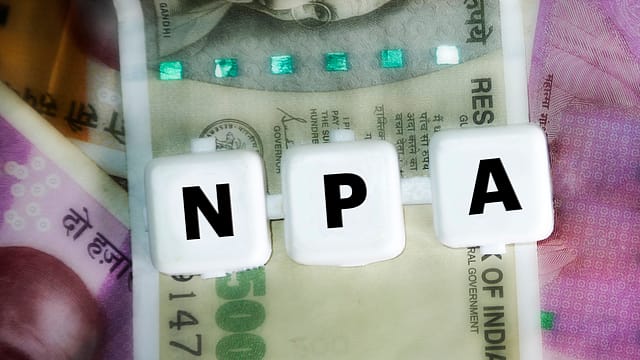PSBs’ net loans write-off dips to ₹84,000 cr in FY23: FinMin
ADVERTISEMENT

The net recovery in written-off loans during the financial year (net write-off) in public sector banks (PSBs) was ₹1.18 lakh crore in the financial year (FY) 2017-18, which declined to ₹0.91 lakh crore in FY 2021-22 (₹91,000 crore) and to ₹0.84 lakh crore (₹84,000 crore) in FY 2022-23, Minister of State for Finance Bhagwat Karad says in the Lok Sabha.
He says the net write-off loans by private sector banks were ₹73,803 crore in FY 2022-23.
"The net write-off as a percentage of opening gross loans and advances in private sector banks was 1.25% and 1.57% in FY 2017-18 and FY 2022-23, respectively, and it was 2% and 1.12% for PSBs during the same period."
Karad says comprehensive steps have been taken by the government and the RBI to recover and bring down bad loans, which has led to a fall to ₹4.28 lakh crore in the gross NPAs of PSBs as on March 31, 2023, from ₹8.96 lakh crore as on March 31, 2018.
January 2026
Netflix, which has been in India for a decade, has successfully struck a balance between high-class premium content and pricing that attracts a range of customers. Find out how the U.S. streaming giant evolved in India, plus an exclusive interview with CEO Ted Sarandos. Also read about the Best Investments for 2026, and how rising growth and easing inflation will come in handy for finance minister Nirmala Sitharaman as she prepares Budget 2026.
"Change in credit culture has been affected, with IBC fundamentally changing the creditor-borrower relationship, taking away control of the defaulting company from promoters/owners, and debarring wilful defaulters from the resolution process. To make the process more stringent, a personal guarantor to the corporate debtor has also been brought under the ambit of IBC."
Amon other steps taken, the minister says the Centre implemented the Securitisation and Reconstruction of Financial Assets and Enforcement of Security Interest Act, 2002, to make it more effective.
"Pecuniary jurisdiction of Debt Recovery Tribunal (DRTs) was increased from ₹10 lakh to ₹20 lakh to enable the DRTs to focus on high-value cases resulting in higher recovery for the banks and financial institutions. Under the PSB Reforms Agenda, comprehensive and automated Early Warning Systems (EWS) were instituted in PSBs, with 80 EWS triggers and use of third-party data for time-bound remedial actions in the borrowing accounts."
Notably, Indian lenders' gross non-performing assets (GNPA) ratio also continued its downtrend and fell to a 10-year low of 3.9% in March 2023 from a high of 11.5% in March 2018, according to the Reserve Bank of India's Financial Stability Report.
The share of large borrowers in gross advances of SCBs declined successively over the past three years (from 51.1% in March 2020 to 46.4% in March 2023) as retail loans grew faster than borrowings by corporates. The share of large borrowers in the GNPAs of SCBs also came down substantially (from 75.7% in March 2020 to 53.9% in March 2023).
